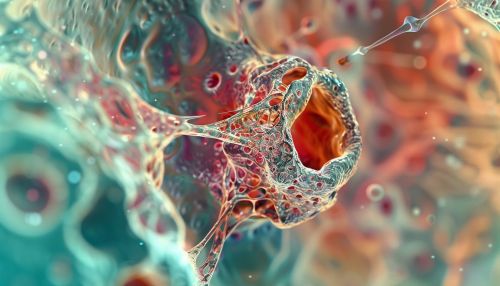Oxidative Damage
Introduction
Oxidative damage refers to the harm that occurs to cells and tissues as a result of reactive oxygen species (ROS) and other free radicals. These reactive molecules are produced in the body as by-products of normal metabolic processes, but they can also be introduced from external sources such as radiation, toxins, and pollutants. When the body's natural antioxidant defenses are overwhelmed, these reactive molecules can damage cellular components, leading to a variety of pathological conditions and diseases. This article delves into the mechanisms of oxidative damage, its role in disease, and the body's defenses against it.
Mechanisms of Oxidative Damage
Oxidative damage occurs when reactive oxygen species, including free radicals, interact with cellular components such as DNA, proteins, and lipids. This interaction can lead to the modification or destruction of these components, impairing cellular function and potentially leading to cell death.


Reactive Oxygen Species and Free Radicals
Reactive oxygen species (ROS) are chemically reactive molecules containing oxygen. These include oxygen ions, free radicals, and peroxides. Free radicals are molecules with an unpaired electron in their outer orbital, making them highly reactive. The most common ROS in the body are superoxide (O2−), hydrogen peroxide (H2O2), and hydroxyl radical (OH•).
ROS are produced in the body as by-products of normal metabolic processes, particularly in the mitochondria during the process of cellular respiration. They can also be introduced from external sources such as radiation, toxins, and pollutants.
Oxidative Damage to DNA
DNA is particularly susceptible to oxidative damage. ROS can cause a variety of modifications to DNA, including base modifications, strand breaks, and cross-linking. The most common oxidative modification to DNA is the formation of 8-oxo-7,8-dihydroguanine (8-oxoG), a highly mutagenic lesion that can lead to base mispairing and DNA mutations.
Oxidative Damage to Proteins
Proteins are also targets for oxidative damage. ROS can cause protein oxidation, leading to the formation of carbonyl groups, protein-protein cross-links, and protein fragmentation. Oxidative damage to proteins can result in loss of enzyme activity, altered protein-protein interactions, and impaired cellular function.
Oxidative Damage to Lipids
Lipids, particularly polyunsaturated fatty acids in cell membranes, are susceptible to oxidative damage. The process of lipid peroxidation involves the oxidation of lipids by ROS, resulting in the formation of lipid peroxides and other reactive aldehydes. These products can further react with other cellular components, causing additional damage.
Role of Oxidative Damage in Disease
Oxidative damage plays a significant role in the pathogenesis of many diseases. These include neurodegenerative diseases, cardiovascular diseases, cancer, and aging-related diseases.
Neurodegenerative Diseases
Oxidative damage is implicated in the pathogenesis of several neurodegenerative diseases, including Alzheimer's disease, Parkinson's disease, and amyotrophic lateral sclerosis (ALS). In these diseases, oxidative damage to neuronal cells contributes to their dysfunction and death.
Cardiovascular Diseases
In cardiovascular diseases, oxidative damage to endothelial cells, lipids, and proteins plays a key role. Oxidative damage contributes to the development of atherosclerosis, a condition characterized by the buildup of fatty deposits in the arteries.
Cancer
Oxidative damage to DNA can lead to mutations that contribute to the development of cancer. Additionally, oxidative stress can promote tumor progression by stimulating cell proliferation and angiogenesis, and by inhibiting apoptosis.
Aging-Related Diseases
Oxidative damage is also associated with aging and aging-related diseases. The accumulation of oxidative damage over time can lead to cellular senescence and the development of age-related diseases such as cataracts, osteoarthritis, and age-related macular degeneration.
Body's Defenses Against Oxidative Damage
The body has several defense mechanisms to protect against oxidative damage. These include antioxidant enzymes, non-enzymatic antioxidants, and DNA repair mechanisms.
Antioxidant Enzymes
The body produces several antioxidant enzymes that neutralize ROS. These include superoxide dismutase (SOD), catalase, and glutathione peroxidase. These enzymes convert ROS into less reactive molecules, thereby preventing oxidative damage.
Non-Enzymatic Antioxidants
In addition to antioxidant enzymes, the body also utilizes non-enzymatic antioxidants to neutralize ROS. These include molecules such as vitamin C, vitamin E, and glutathione. These antioxidants can directly scavenge ROS, preventing them from causing oxidative damage.
DNA Repair Mechanisms
The body also has mechanisms to repair DNA damage caused by ROS. These include base excision repair, nucleotide excision repair, and mismatch repair. These repair mechanisms remove and replace damaged DNA, preventing the accumulation of DNA mutations.
